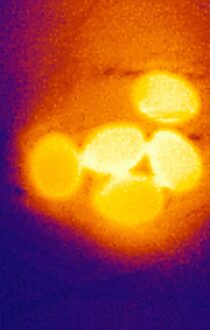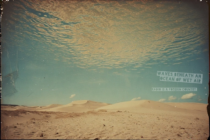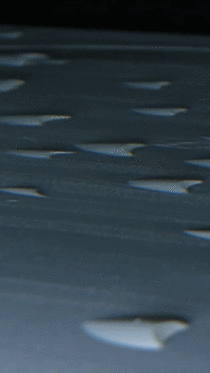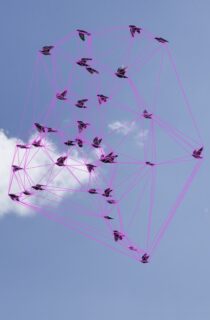The Body is a Vessel (2010)
|
For Freediver and Computer
Performance duration: 15 minutes Radio transmission of an excerpt of The Body is a Vessel on national radio Deutschlandradio Kultur, Klangkunst (by Marcus Gammel) PDF documentation here Premiered at the SuperCollider Symposium at the kleine Wasserspeicher in Berlin, Prenzlauer Berg on September 25 2010, 7pm (Google Map) The Body is a Vessel is a musical composition determined and performed by the human body. Special microphones and sensors let us listen to the physiological processes of professional freediver Elisabeth Kristoffersen. Submerged under water, which is contained in a rowing boat on stage, Kristoffersen will hold her breath for up to six minutes, letting us experience the physiological transformations she undergoes whilst doing so. The diver’s strict organization of time during preparation and diving form the basic structure of the music. The sounds of the heart, lungs, bloodflow and diaphragm are used as musical material and heard live in the hall. Using an EEG, changes of brain activity are made audible and take us even deeper into the diver’s body. The Body is a Vessel submerges us in a baptism set to the sounds of science. protective and exposing, this work explores the perspectives of human evolution. The Body is a Vessel was produced thanks to the support of the SuperCollider Symposium, Berlin and the Haute Ecole Arc Ingénierie in St. Imier, Switzerland.
Introduction “The Body is a Vessel” takes up this post-humanist promise to create a performance using modern-day technology in collaboration with professional free-diver Elisabeth Kristoffersen. Together, Meier and Kristoffersen embark on a journey towards the next step of human evolution. Materials An electrocardiogram (ECG) monitors and amplifies the diver’s heartbeat. With a trained free-diver the heart rate can drop down to 30 bpm and go up as high as 130 bpm or more. Certain drops are triggered by physiological reflexes, eg. when the face is immersed in water. These dramatic changes in heart rate, the body’s natural evolutionary adaptation technique, are the basic building blocks for the rhythmical structure of TBIAV. Thanks to the support of swiss university HE-ARC we use an electroencephalogram (EEG) to monitor the divers neural activity. During an initial relaxation period the general activity of the divers brain will slowly decrease, thus inducing an audible change in the resulting sounds in the hall. After prolonged breath holding periods a diver’s body will slowly reduce blood flow in certain regions of the body to limit oxygen consumption to strictly vital parts of the central nervous system. These literally breathtaking properties of the human body and brain control the harmonic content of TBIAV. Finally a miniature microphone monitors and amplifies the divers breathing patterns during preparations and after the dive. It also allows us to hear contractions of the diaphragm, which is triggered by the acute lack of oxygen. A free-diver however, will consciously ignore these audible and sometimes painful contractions to carry on and go beyond the perceived limits of our body. Conclusion |









Pingback: The Body is a Vessel on the Radio in Montreal | robin meier